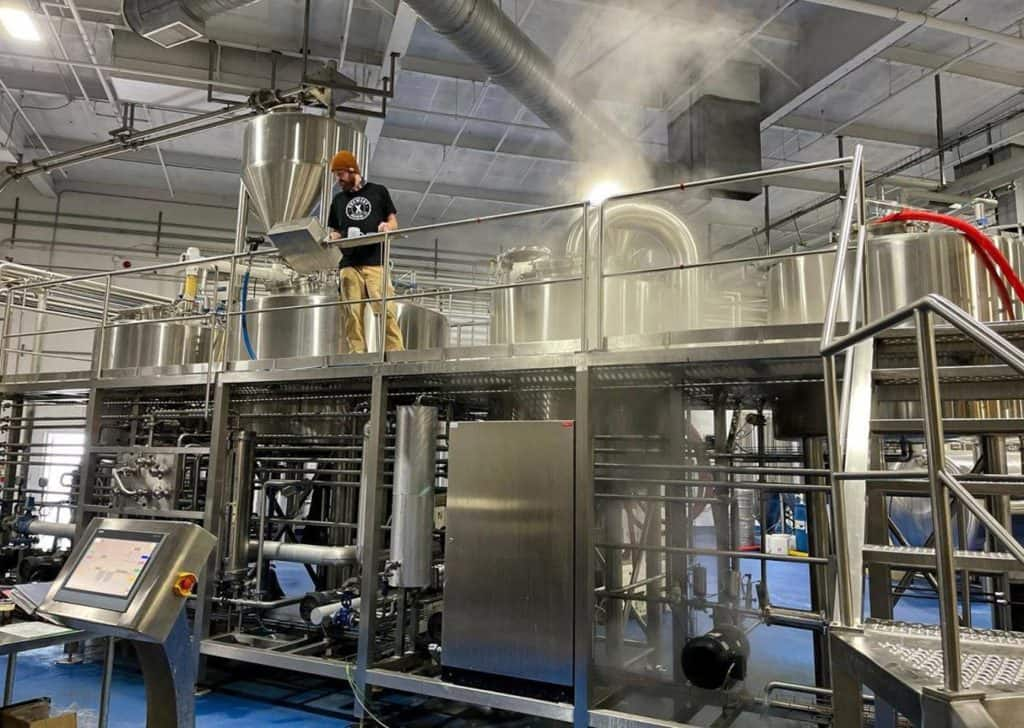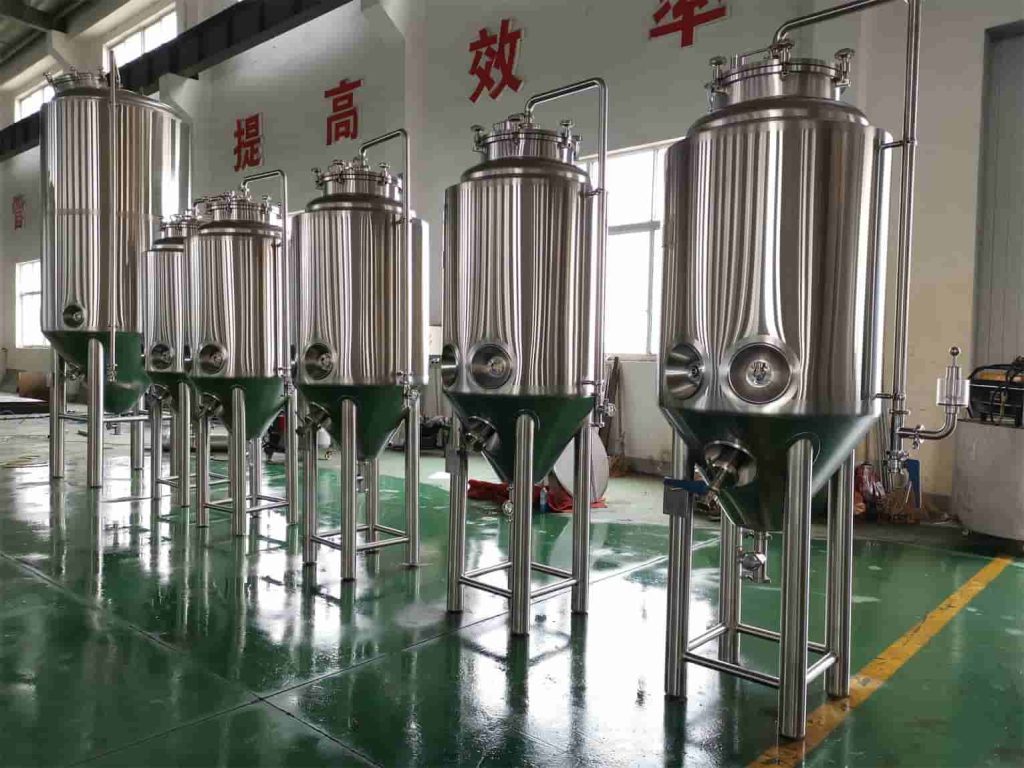Introduction
The brewing process involves several steps, each requiring specialized equipment. From milling grains to fermenting and packaging beer, the right equipment can make all the difference in producing high-quality beer efficiently. When choosing commercial brewing equipment, it’s essential to consider your brewery’s specific needs, production goals, and budget.
Key Factors to Consider

Production Capacity: Determine your brewery’s projected production volume, considering factors like batch sizes, brewing frequency, and anticipated growth. Choose equipment that can handle your current and future production demands without compromising quality or efficiency.
Quality and Durability: Invest in high-quality, durable equipment made from food-grade stainless steel. This will ensure your equipment can withstand the rigors of commercial brewing and provide years of reliable service.
Functionality and Features: Consider the specific functions and features you need based on your brewing process and desired beer styles. This may include features like automated temperature control, integrated heat exchangers, and advanced wort chilling systems.
Space Requirements: Evaluate the available space in your brewery and choose equipment that fits comfortably without compromising workflow or safety. Consider factors like equipment size, clearance requirements, and access for maintenance.
Energy Efficiency: Opt for energy-efficient equipment to reduce your brewery’s environmental impact and operating costs. Look for features like insulated tanks, efficient pumps, and heat recovery systems.
Budget: Set a realistic budget for your equipment purchases and consider the long-term cost of ownership, including maintenance, repairs, and potential upgrades.
Scalability: Choose equipment that can scale with your brewery’s growth, allowing you to increase production capacity without having to replace major components.
Reputation and Support: Select equipment from reputable manufacturers known for producing high-quality products and providing excellent customer support. Research online reviews and consult with experienced brewers for recommendations.
Popular Commercial Brewing Equipment

| Equipment | Description |
|---|---|
| Mash Tun | The mash tun is where grains are mixed with hot water to extract fermentable sugars. It typically consists of a stainless steel tank with a false bottom and integrated heating and stirring mechanisms. |
| Lauter Tun | The lauter tun separates the sugary wort from the spent grains after mashing. It has a perforated false bottom that allows the wort to drain while retaining the grains. |
| Wort Kettle | The wort kettle is where the wort is boiled, sterilized, and hopped. It is typically a large stainless steel pot with a heating element and controls for precise temperature regulation. |
| Whirlpool Tank | The whirlpool tank helps clarify the wort by settling out hop particles and other debris before fermentation. It has a tangential inlet that creates a swirling motion, forcing solids to the center. |
| Fermenters | Fermenters are where the wort is converted into beer through the action of yeast. They come in various sizes and styles, from simple tanks to temperature-controlled vessels with advanced monitoring systems. |
| Brite Tanks | Brite tanks are used to condition and clarify the beer after fermentation. They allow the beer to settle and mature, and they may also be used for carbonation and cold conditioning. |
| Packaging Equipment | Packaging equipment includes bottling and canning lines, keg fillers, and labeling machines. Choose equipment that suits your desired packaging methods and production volume. |
Conclusion
Choosing the right commercial brewing equipment is an investment in the quality, consistency, and success of your brewery. Carefully consider your specific needs, production goals, and budget to select equipment that will meet your demands and support your brewery’s growth. Prioritize quality, functionality, and energy efficiency to ensure long-term value and sustainable operations. With the right equipment in place, you can craft exceptional beer and establish a thriving brewery.
FAQ
How do I determine the appropriate size of fermentation tanks for my brewery?
- The size of fermentation tanks depends on your brewery’s production volume, beer styles, and fermentation schedule. Consult with equipment suppliers or industry experts to determine the optimal tank size for your needs.
What are some common maintenance tasks for commercial brewing equipment?
- Regular maintenance tasks include cleaning brewing vessels, inspecting seals and gaskets, lubricating moving parts, and calibrating temperature control systems. Follow manufacturer recommendations and industry best practices for equipment maintenance.
Can I customize commercial brewing equipment to suit my brewery’s specific requirements?
- Yes, many equipment manufacturers offer customization options to tailor brewing equipment to your brewery’s unique specifications and preferences. Discuss your customization needs with equipment suppliers to explore available options.
Are there any regulatory requirements or certifications for commercial brewing equipment?
- Depending on your location and intended market, you may need to comply with various regulatory requirements and obtain certifications for commercial brewing equipment. Research local regulations and industry standards to ensure compliance with applicable laws and regulations.
How often should I upgrade or replace commercial brewing equipment?
- The lifespan of brewing equipment varies depending on factors such as usage, maintenance, and technological advancements. Regularly assess the condition and performance of your equipment and consider upgrading or replacing components as needed to maintain operational efficiency and quality standards.

